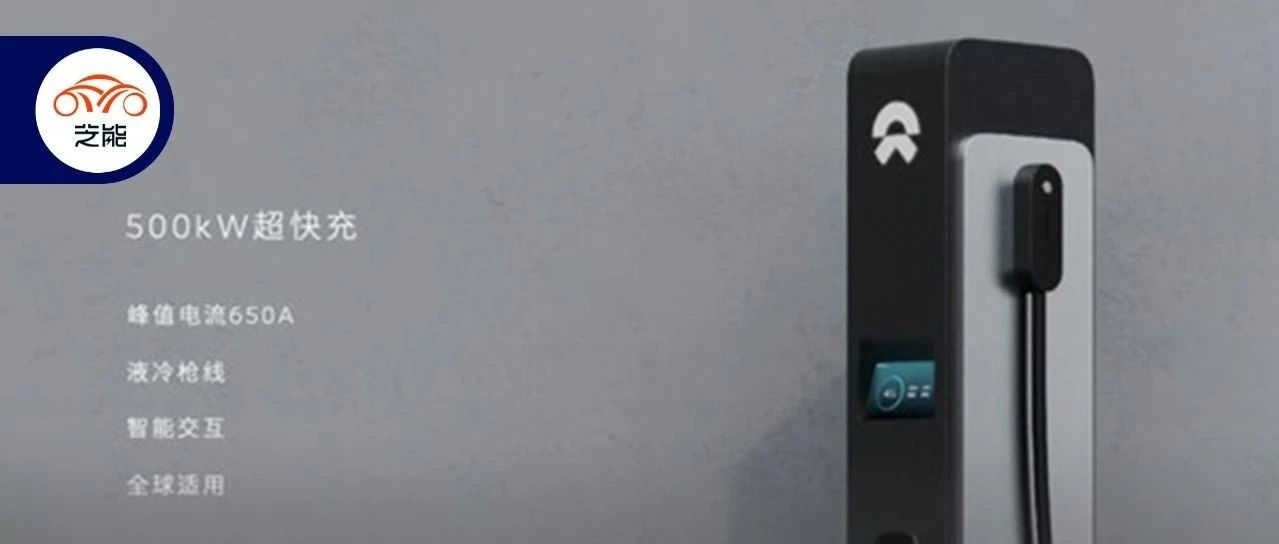Author: Tao Yanyan
There’s only one article left for the “Top 10 Traditional Car Companies’ Electric Transformation Scorecard”, which is about Nissan-Renault-Mitsubishi and will be published tomorrow. Today, we are interrupting with a new series: domestic car companies.
At the beginning of 2020, Meituan CEO Wang Xing discussed the pattern of Chinese car companies and stated that there are “3+3+3+3” players in the following two rounds:
◎ 3 State-owned Enterprises: FAW, Dongfeng, Changan.
◎ 3 Local State-owned Enterprises: SAIC, GAC, BAIC.
◎ 3 Traditional Private Enterprises: Geely, Great Wall, BYD.
◎ 3 New Automakers: Li Auto, Nio, XPeng.
Our tracking starts from Li Auto’s article. As a representative of new energy vehicles, this new automaker has been at the forefront of the market. According to the data released by Li Auto, the cumulative delivery in 2022 is 122,486 units, a year-on-year increase of 34%. This article will systematically explain Li Auto from the aspects of sales, products, the whole company system, and going global.
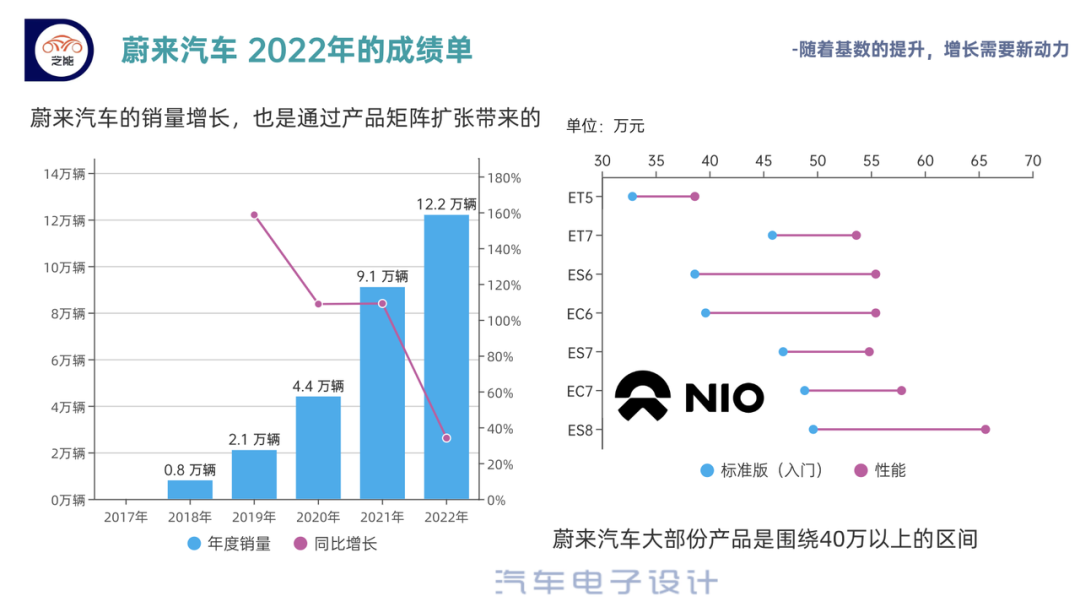
For now, Li Auto’s follow-up strategy logic revolves around different price ranges of car models.
◎ Li Auto’s main brand is positioned at 350,000 to 500,000 yuan. Among them, only ET5 is the cheapest model; other models have an average price of more than 400,000 yuan, but we see that it has less than 10% market share.
◎ The second brand mainly targets the price range of 250,000 to 350,000 yuan, aiming for 15% of the market share.
◎ Going further down to 200,000 yuan, they will explore another 10% market share in the range of 200,000 to 250,000 yuan.
Looking at the gradient of the brand, Li Auto’s main brand functions as a new energy market opener, and as Tesla has done with the Model 3 and Model Y, they will need to continuously experiment with vehicle models to expand sales volume.
 ## Luxury Electric Vehicle Market
## Luxury Electric Vehicle Market
Global Market
If NIO enters the global market, especially the European market, it’s logical to eliminate the differences between several traditional luxury electric vehicle companies. With this luxury car segment, Chinese cars can provide a model for European consumers without pursuing particularly large sales volume (grabbing 100,000 units is not a problem), and it is meaningful. Therefore, NIO’s promotion of battery swapping and different strategies when going abroad will be welcomed by the European market and won’t be under pressure from public opinion.
Currently, NIO’s volume in Europe is still in the trial phase, and there may be changes in 2023-2024.
Note: If you want to “cheaply” sell electric vehicles through economies of scale, exporting millions of units at once, you will easily be criticized.

Chinese Market
NIO’s platform switch is indeed for the improvement brought by autonomous driving assistance, but it’s not particularly attractive to potential users of luxury cars. The switch from ME to NV is effective – we tested the autonomous driving assistance system of ET7, which is indeed easy to use. But it will take more time to have an immediate effect on sales. Whether it is sales or service, more time is needed for consumers to gradually accept the system and for the user’s general recognition and large-scale secondary recommendation.
It is particularly important to note that the traditional NIO sales rely on their service to influence word of mouth and recommendations, but owners of autonomous driving assistance vehicles are very careful when using them and are less likely to recommend them to friends and family – as if anything went wrong, responsibility is difficult to determine. Therefore, the effect brought by autonomous driving assistance is limited for NIO’s brand recommendation mechanism.
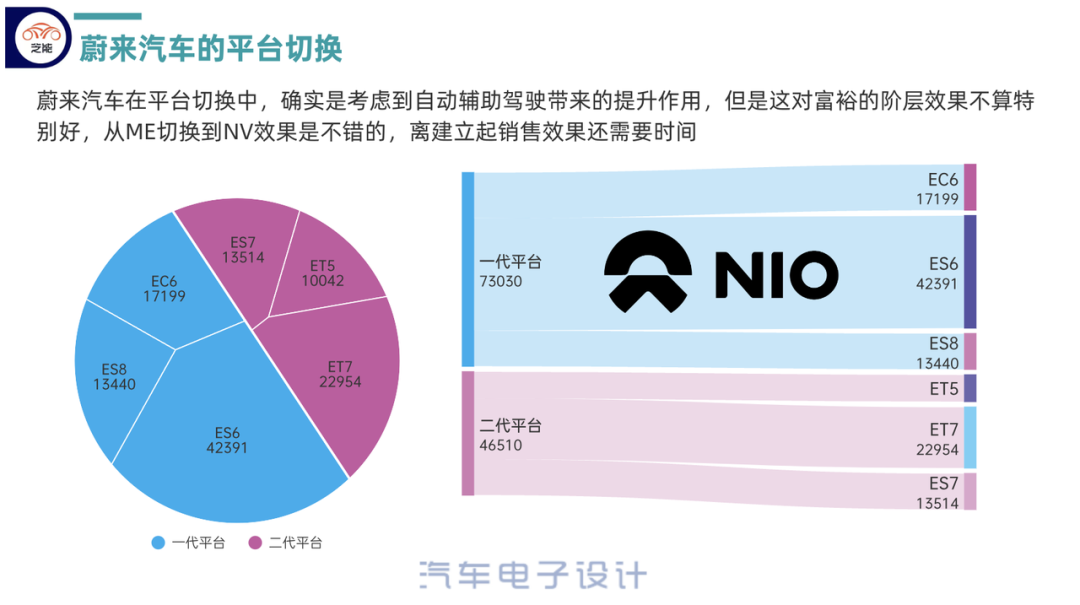
ES7 and ET7 Delivery
From a time perspective, the delivery peak of ES7 and ET7 has temporarily passed, and the initial issues with the second-generation vehicle platform have indeed affected the reputation. As the improvements to the issues are implemented, it is worth considering how to market the next wave of ET7, ES7, EC7, etc.
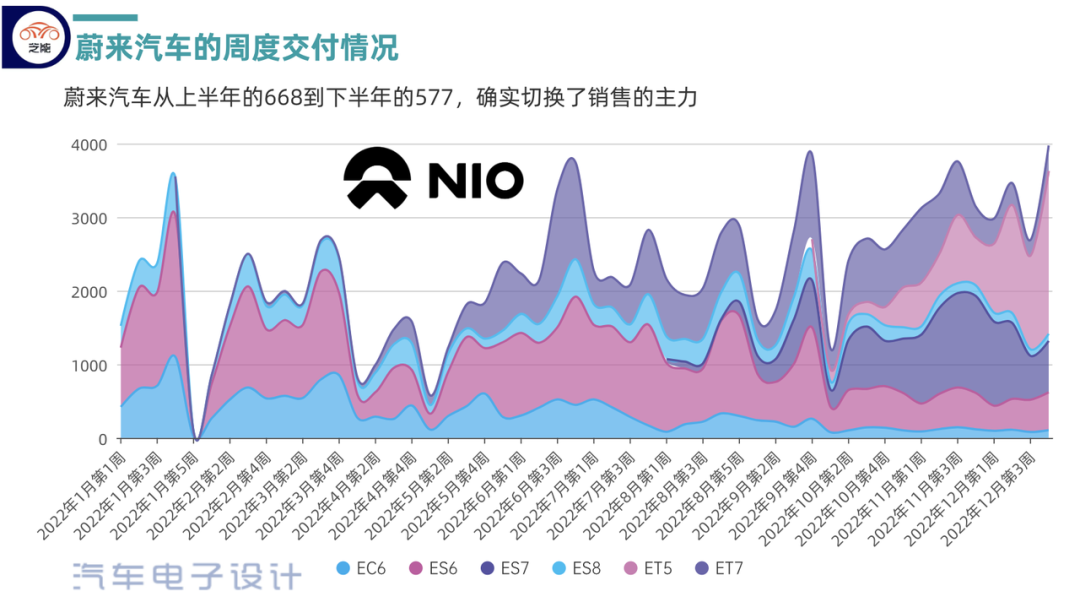
Energy Supplement System and Development
NIO was the first in China to invest heavily in an energy supplement system.
Battery Swap Network
The battery swap network provides convenient user experience in many cases. As of early January, NIO has built 1,307 battery swap stations in the Chinese market, of which 346 are on expressways, and completed a high-speed battery swap network layout of 5 verticals and 3 horizontals in 8 major city clusters. By 2023, NIO will have built more than 1,700 battery swap stations in the Chinese market, and NIO’s users will achieve a more convenient energy supplement effect with “charging the battery as convenient as refueling”.
With the expansion of users, it is indeed worth considering whether this system can support a larger scale of users, especially when the second brand also uses battery swap technology, will it cause conflict between the user groups with product prices of 250,000+ and 450,000+ competing for the same battery swap system. It can be seen that the contradictions that will arise in waiting times and resource allocation will be very prominent (similar to the VIP queue cut-off system in banks).

Charging Network
By 2022, NIO has built 13,384 charging piles. In 2023, the third-generation battery swap station and 500 kW ultra-fast charging will begin to be deployed, and the number of charging piles will exceed 20,000. Currently, NIO is a single-brand company, and the charging network is more like a supplement to battery swapping; but with the emergence of 800V technology and different brands, the final layout of charging will be greatly differentiated based on brands. Therefore, how to layout the charging network is still something that will be considered in the long run.“`
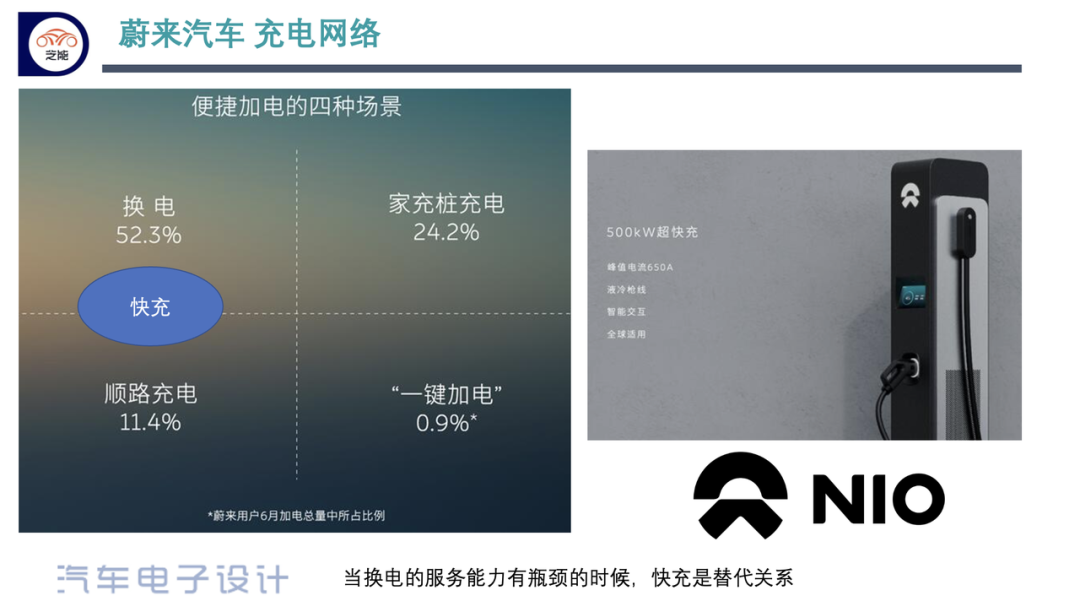
Summary: Regarding some opinions published by NIO, it is impressive that NIO indeed believes that entering homogenization and red ocean in terms of technology or product definition is inevitable. How to follow a long-term strategy based on different approaches is particularly crucial. As a company with many self-developed technologies but not relying on technological differentiation, NIO’s playbook is different from many domestic car companies. Therefore, here’s the first annual summary of NIO.
“`
This article is a translation by ChatGPT of a Chinese report from 42HOW. If you have any questions about it, please email bd@42how.com.
